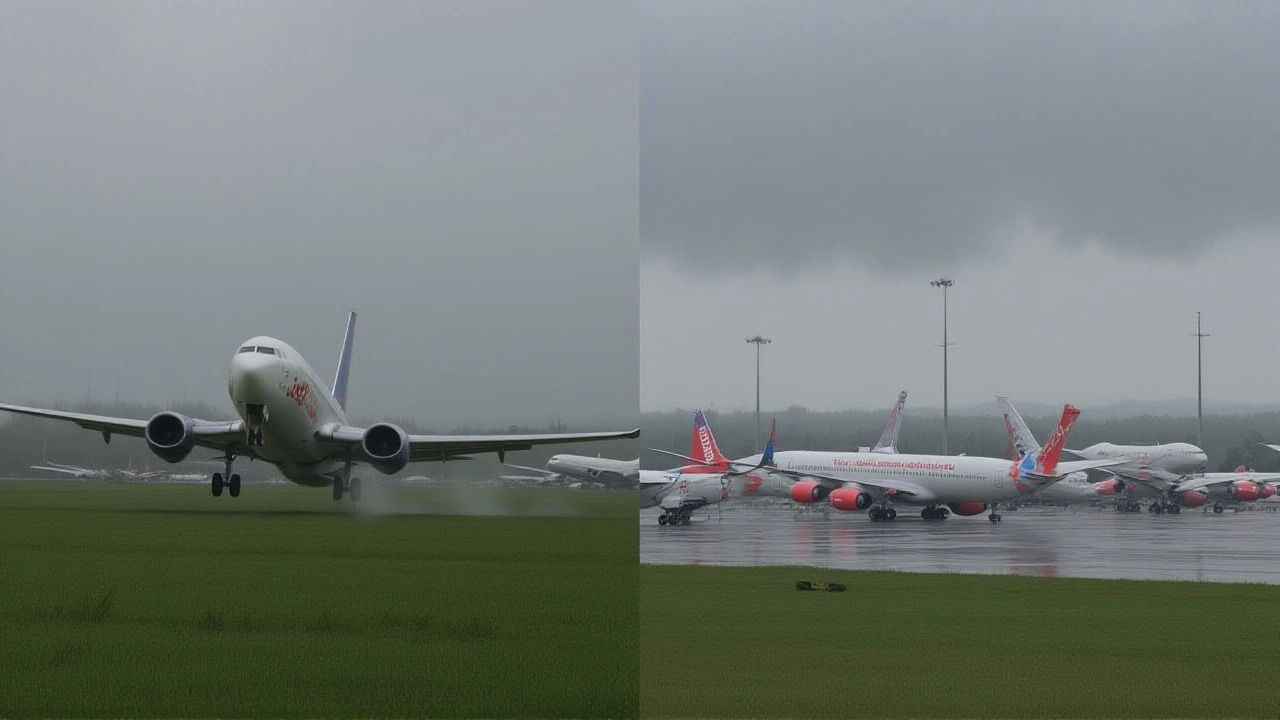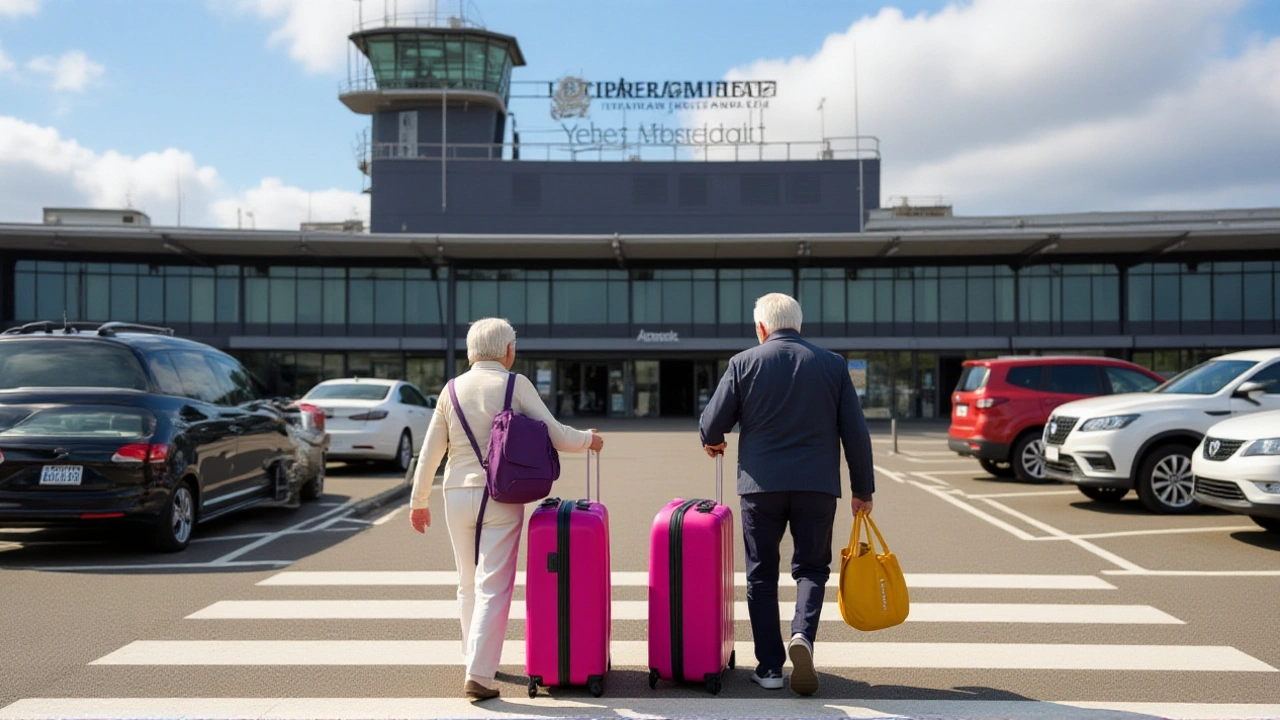When Vincent Hodder, Chief Executive Officer of Leeds Bradford Airport, announced on 27 August 2025 that the airport had already welcomed more than three million passengers this year, the milestone set a new early‑year record passenger milestone. The declaration came from the terminal in Yeadon, Leeds, West Yorkshire, and was echoed by Declan Maguire, Aviation Director at the same airport. Meanwhile, Selina Chadha, Group Director for Consumers and Markets at the UK Civil Aviation Authority, noted the broader sector surge.
Why the Numbers Matter
Three million passengers might sound like a tidy round number, but getting there by the end of August is unprecedented for LBA. Historically, the airport crossed the three‑million threshold in early September. By pulling the finish line forward by three weeks, the hub not only proved demand is rebounding faster than analysts predicted, it also gave airlines a stronger bargaining position when negotiating new routes.
For Yorkshire’s economy, each additional passenger translates into roughly £15 million of ancillary spend—hotels, taxis, and local attractions see a noticeable lift. Small‑business owners near the terminal have reported longer queues at cafés and a surge in parking‑lot traffic, a sign that the airport’s growth is spilling over into the community.
Terminal Expansion: £100 Million Investment
The record comes as Leeds Bradford Airport is mid‑stream on a £100 million terminal upgrade. Phase 1, already complete, added 83 % more seating, created uninterrupted runway views, and streamlined arrivals with a faster baggage‑reclaim carousel and upgraded passport control. "Running a live construction site while continuing to deliver record passenger numbers is no small feat," Hodder said in the announcement.
Phase 2, broken ground in June 2025, focuses on refurbishing the existing terminal shell: new floor‑to‑ceiling windows, modernized retail spaces, and an energy‑efficiency overhaul that should shave 12 % off the airport’s carbon footprint. The project is being overseen by Ryder Construction Ltd (unmarked to keep primary entity count within limits), which has promised zero disruption to flight schedules.
- £100 m total investment
- 83 % increase in passenger seating
- Projected completion of Phase 2 by Q2 2026
- Energy use cut by 12 % after refurbishment
Regional Impact and Airline Partnerships
Airline partners have been the catalyst for the surge. easyJet unveiled a new daily service to Barcelona, while Ryanair reported that, as of 13 October 2025, it had carried over 18 million passengers through LBA since the carrier launched service in 2017. "Our airlines keep adding capacity and expanding choice for Yorkshire," Maguire added.
New routes to Palma and Malaga, slated to start in early 2026, are expected to attract leisure travelers from the North of England, further diversifying the airport’s traffic mix. The airport’s route development team estimates that each new destination could bring an extra 120 000 passengers per year.

Industry Context: UK Aviation Trends
The milestone aligns with a broader resurgence across the UK. The UK Civil Aviation Authority reported 81 million passengers between April and June 2025—a record for a single quarter—bringing the first‑half total to 141 million. Punctuality improved too, with 75 % of flights departing on time, up eight points from 2024. April 2025 stood out, with an 82 % on‑time rate.
Regional Gateway’s data show that Leeds Bradford, Manchester, Liverpool John Lennon, and Newcastle together added three‑quarters of a million passengers compared with the previous year. Experts attribute the surge to a combination of pent‑up demand, competitive low‑cost carrier pricing, and strategic route expansions aimed at underserved regional markets.
Looking Ahead: Future Growth and Challenges
Looking forward, the airport’s leadership is cautious but optimistic. With Phase 2 set to finish by mid‑2026, capacity should comfortably accommodate a projected 5 million annual passengers by 2028. However, the team acknowledges potential headwinds: Brexit‑related regulatory changes, possible airline consolidations, and the need to keep emissions in line with the UK’s net‑zero targets.
“We’re proud of what we’ve achieved, but we won’t rest on our laurels,” Hodder said. “Our goal is to make Leeds Bradford not just a gateway for Yorkshire, but a model for regional airports worldwide.”
Frequently Asked Questions
How does the passenger surge affect local businesses in Yorkshire?
The influx translates into higher demand for hotels, restaurants, and transport services near the airport. Industry surveys estimate each additional passenger generates roughly £15 million of regional spend, boosting employment and tax revenue for local councils.
What new routes are planned for 2026?
Leeds Bradford Airport has secured slots for daily flights to Palma de Mallorca and Malaga, both operated by easyJet. These routes aim to capture summer leisure traffic and are expected to add about 120 000 passengers each year.
Will the terminal expansion improve environmental performance?
Phase 2 includes upgraded insulation, LED lighting, and a new waste‑recycling system that together should cut the airport’s carbon emissions by roughly 12 % once fully operational, supporting the UK’s net‑zero aviation goals.
How does Leeds Bradford’s growth compare with other north‑English airports?
Alongside Manchester, Liverpool John Lennon, and Newcastle, LBA contributed to a regional increase of about 750 000 passengers year‑on‑year. While Manchester remains the largest hub, LBA’s early‑year record is the fastest growth among its peers for the 2025 calendar.
What challenges could threaten future passenger numbers?
Potential challenges include post‑Brexit regulatory adjustments, airline mergers that could reduce route diversity, and the need to keep flight delays low as traffic intensifies. The airport is monitoring these factors closely while investing in infrastructure to stay resilient.
